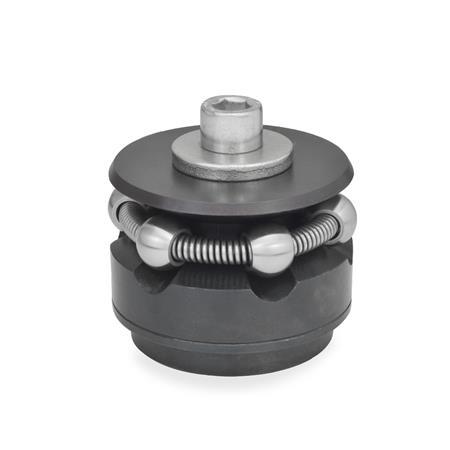Product description
With centering bore clamps GN 411.2 workpieces can be centrally positioned and clamped from the inside of the bore.
They offer the following advantages:
- Precise self centering
- Repetitive accuracy: ± 0,025
- Accuracy of concentricity: ± 0,05
- Solid and stable clamping through either 3 or 6 contact points on the workpiece
- Clamping of workpieces with uneven or irregular surface (such as castings) with type K
- Distortion free clamping
- Reduced height
- Can be fitted in any position
- Large adjustable range
- Draw-down clamping
Specification
Steel
- Hardened
- Blackened
Clamping balls / segments
- Hardened
- Plain, tumbled
RoHS
On request
Centring bore clamps GN 411.3
operable from the opposite side respectively for hydraulic or pneumatic operation
Centring bore clamps with 2 clamping elements for clamping tubes

